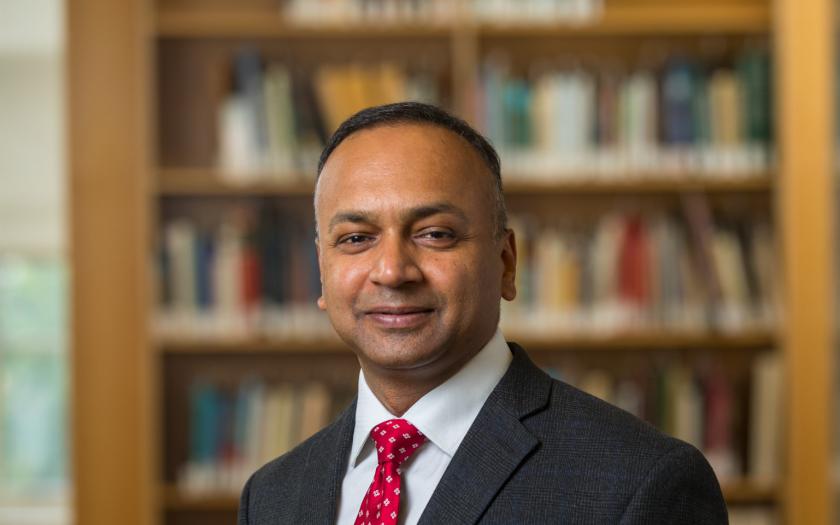September Faculty Spotlight - Vikas Srivastava

Vikas Srivastava
Vikas Srivastava has recently joined the Center for Biomedical Engineering as an assistant professor. Professor Srivastava's background is in solid mechanics and mechanics of materials. "I was educated as a mechanical engineer," he says. "My PhD research at MIT was on amorphous polymers and shape memory polymers." While his previous work has been solid mechanics based, he has applied his research to biomedical engineering before: "One particular biomedical application that I modeled during my PhD research was a shape memory polymer-based arterial stent."
Following his PhD, Professor Srivastava worked as Mechanics Team Lead at ExxonMobil Upstream Research. There, he says he saw the applications of fluid and solid mechanics in a wide variety of problems. "After seeing the applications of mechanics in a very diverse variety of research problems, I realized the significant potential of my research background in biomedical engineering, which drove my decision to join the exciting research program in BME at Brown.”
Professor Srivastava emphasizes the importance of perseverance in success as a researcher. "For experiments not to work out in a research environment is very common, it happens quite often," he says. "I've seen it and experienced it, both personally and among my fellow lab members. I think it's very natural and perfectly okay for experiments not to work out because sometimes it teaches us more [than success] and can give us new directions in the research."
In the area of soft materials with potential applications to biomedicine, Professor Srivastava is most proud of one of his papers on his PhD work in the Journal of the Mechanics and Physics of Solids, which gives experiments, theoretical modeling, and simulations of thermally actuated shape memory polymers. “Thermally actuated shape memory polymers are polymers that can be squished or twisted or bent into a variety of new shapes and then when heated will go back to their original shape," he explains. "While shape memory polymers have been known for decades, several exciting biomedical applications have been demonstrated recently." However, many of these applications are a result of trial and error rather than a detailed understanding of the polymers' molecular behavior and how it leads to their time and temperature dependent mechanical response. “The mathematical modeling and numerical simulation method...that me and my fellow researchers developed will allow for people to more accurately design complex shape memory polymer-based systems and devices," says Professor Srivastava.
He tries to teach his graduate students this perseverance, as well as creativity and critical thinking. “I like [my graduate students] to have bold research ideas and expect members of my lab to play a leading role in shaping their research directions." For undergraduates, Professor Srivastava advises them to try out a variety of research experiences. "Take undergraduate research opportunities in different labs and groups to understand which research topic or area really interests [you], with the goal to understand what research area [you're] really passionate about for [your] graduate level research.”
Professor Srivastava is excited to focus on interdisciplinary research topics: "The topics that are of research interest to my group lie at the intersection of problems which firstly can improve human live through biomedical systems and materials research or where mechanics or physics plays an important role. Our interests are in development of new medical devices and early disease detection and treatment systems." He hopes to explore work with other labs both within and outside of engineering at Brown. "One thing I'm quite excited about is developing many collaborations with Brown faculty, not only within engineering but outside of engineering and in the medical school."